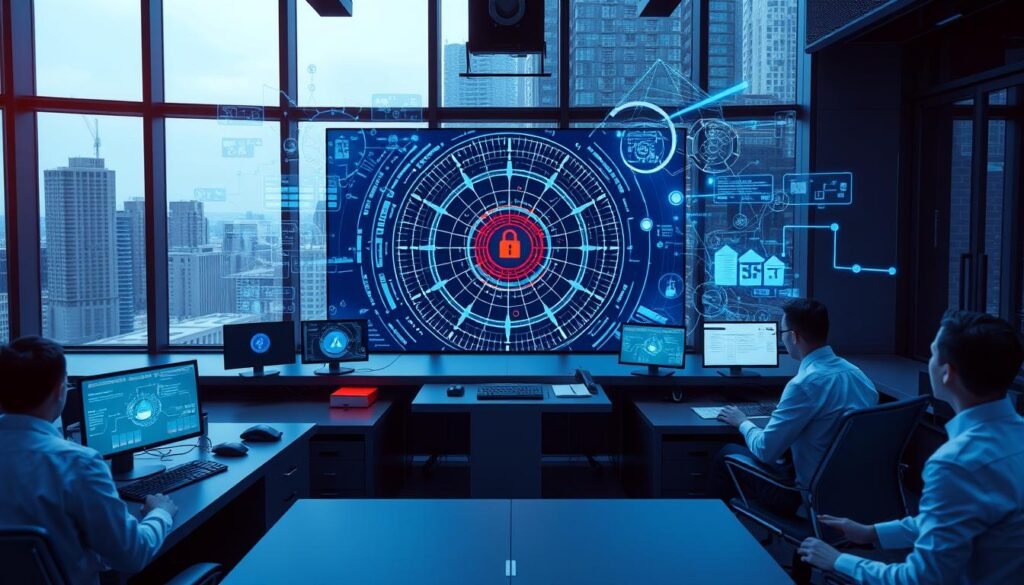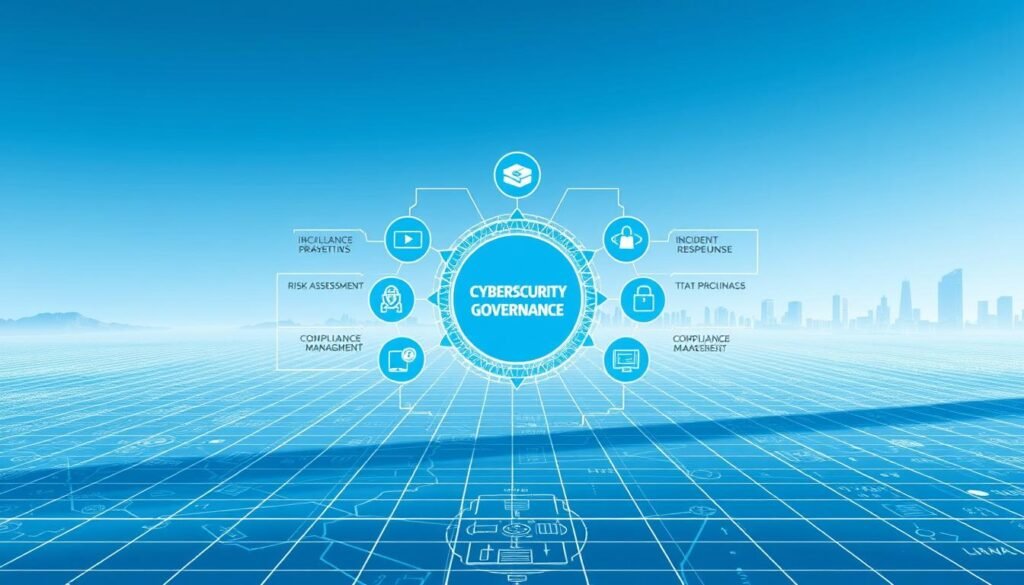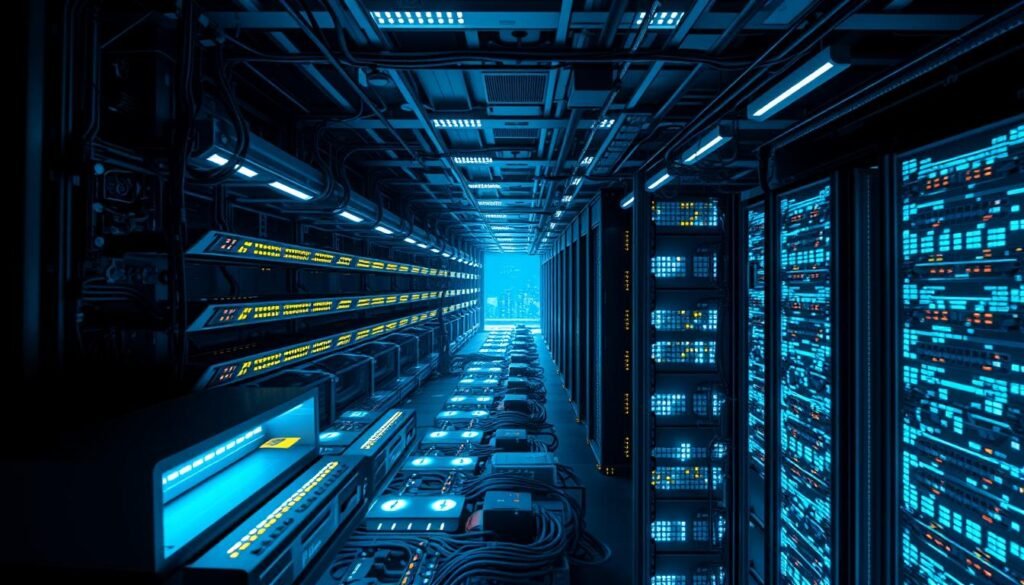Imagine losing $10.5 trillion every year to invisible adversaries. That’s the staggering global cost of cybercrime projected by 2025—a figure larger than the GDP of most nations. North American organizations now face a critical juncture: adapt or risk becoming collateral damage in this escalating digital war.
Recent data reveals manufacturing firms suffered more attacks than any sector last year. Financial institutions trailed closely, proving no industry remains untouched. Smaller enterprises face particular peril—a 36% spike in breaches over four years highlights how limited resources create glaring vulnerabilities.
The price of failure keeps climbing. Each data breach now costs companies $4.35 million on average, draining budgets and eroding customer trust. Attackers exploit weaknesses faster than ever, leveraging AI-driven tactics and hybrid work infrastructures. What once required months of planning now unfolds in minutes.
We’re seeing threat landscapes evolve at breakneck speed. Cloud migrations, IoT adoption, and remote operations have created fresh vulnerabilities. Criminals target supply chains and third-party vendors, turning minor flaws into systemic crises. Defense strategies must now encompass entire ecosystems, not just firewalls.
This isn’t just about protecting data—it’s about safeguarding livelihoods. Leaders who treat security as an afterthought risk catastrophic disruptions. The solution lies in proactive measures: continuous employee training, zero-trust frameworks, and real-time threat intelligence. Survival demands nothing less.
Understanding the Evolving Cyber Threat Landscape

Digital defenses now face adversaries operating at machine speed. We’ve entered an era where ransomware morphs into billion-dollar cartels—malicious code evolves faster than most teams can patch vulnerabilities. Every internet-connected device becomes a potential doorway for attackers.
Emerging Risks in the Digital Age
Modern malware hides in plain sight. Attackers embed malicious scripts in PDF invoices or Excel sheets—documents employees trust daily. Once opened, 2,048-bit encryption locks critical data instantly. Decryption? Nearly impossible without paying up.
| Attack Type | Detection Rate | Average Ransom | Recovery Time |
|---|---|---|---|
| Ransomware | 12% | $1.5M | 23 days |
| Phishing | 34% | $4.3M | 58 days |
| Supply Chain | 8% | $2.8M | 41 days |
Impact on North American Industries
Manufacturing plants face triple the attacks compared to 2020. Why? Legacy systems meet smart factories. Hospitals battle encrypted patient records mid-surgery. Financial firms see AI-powered phishing mimicking CEOs’ writing styles.
Third-party vendors now serve as backdoors. A single HVAC contractor’s login credentials recently caused a regional power outage. We’re building defenses that must stretch beyond firewalls—into every partner’s server room.
Key Cybersecurity Challenges for Business Continuity

Modern enterprises navigate a minefield of digital threats that can halt operations instantly. Three critical dangers now dominate boardroom discussions—each capable of crippling business functions within hours.
Ransomware, Malware, and Phishing Attacks
Attackers have weaponized urgency. Recent campaigns target backup systems first—eliminating recovery options before encrypting primary data. We’ve seen hospitals lose access to patient records mid-surgery because ransomware struck both servers and emergency backups simultaneously.
Phishing schemes now mirror corporate hierarchies. Fake “CEO approval requests” bypass traditional filters by mimicking internal communication styles. One financial firm lost $2.8 million when attackers replicated their CFO’s Slack messaging patterns.
Data Breaches and Reputational Damage
Stolen credentials fuel a $6 trillion dark web economy. Customer payment details often appear on illicit markets within 47 minutes of a breach. For smaller organizations, the aftermath proves devastating—83% never fully recover from public trust erosion.
Legal fallout compounds the crisis. A single exposed Social Security number can trigger $150,000 in regulatory fines. We’ve witnessed class-action lawsuits drain resources for years post-breach, even when vulnerabilities were patched promptly.
The human cost often goes unmeasured. Employees facing encrypted workstations report lasting anxiety—a hidden productivity drain that persists long after technical recovery.
Cybersecurity for Businesses: Best Practices and Risk Management

Organizations that thrive in turbulent times treat security as a living process—not a static checklist. We’ve seen leadership teams succeed by integrating cyber risk management into their core operational DNA, mirroring how they handle financial planning.
Governance Frameworks as Operational Blueprints
The NIST framework functions like a five-gear engine for digital protection. Identify critical assets first—knowing what needs guarding shapes all other decisions. Protect phases then layer defenses, while continuous detection systems act as early-warning radars.
One healthcare network reduced breach response times by 68% after mapping their data flows. They discovered shadow IT systems processing patient records—vulnerabilities invisible during initial audits. Regular risk assessments now drive their strategy updates.
Crisis Navigation Through Preparedness
When ransomware hit a Midwest manufacturer last quarter, their rehearsed incident plan saved $4.2 million. Teams isolated infected systems within 11 minutes, switching to air-gapped backups. This real-world test proved why dry runs matter.
We recommend these essentials for response readiness:
- Pre-approved communication templates for regulators and clients
- Escalation protocols with time-bound decision milestones
- Forensic partnerships established before emergencies strike
Leaders who treat cyber risks as business-critical threats outperform peers. They build organizations where security evolves faster than threats—transforming potential weaknesses into competitive advantages.
Protecting Critical Business Infrastructure and Systems

Building digital fortresses requires more than walls—it demands adaptive shields. Modern infrastructure protection combines physical hardware with intelligent software, creating overlapping defenses that evolve alongside emerging threats. We design these safeguards to outpace attackers targeting networks, devices, and cloud environments.
Network, Endpoint, and Cloud Security Strategies
Three pillars form our protective framework:
- Network security: Hardware firewalls filter traffic while AI-powered software detects abnormal patterns
- Endpoint defense: Every smartphone, sensor, and workstation runs real-time threat scans
- Cloud safeguards: Encryption protocols and access controls align with provider services
Choosing trusted vendors proves vital. Recent incidents show fake “security updates” installing ransomware instead of protection. We partner with established technology providers whose update mechanisms undergo third-party verification.
Maintenance forms the backbone of effective systems protection. Automated patches address 93% of known vulnerabilities when applied within 24 hours. Our teams prioritize:
- Daily database updates across all networks
- Zero-trust authentication for remote access
- Machine-learning tools that block novel attack methods
Cloud environments demand special attention. While providers secure physical servers, organizations must protect their data and applications. We implement cross-platform monitoring that tracks system interactions across hybrid infrastructures—catching anomalies other solutions miss.
Developing Effective Policies and Employee Education

Human error drives 95% of breaches—a statistic that transforms policy development from paperwork to survival strategy. We craft living frameworks that evolve alongside emerging threats, recognizing that policies only work when paired with engaged, informed teams.
User Account Management and Access Controls
Every login represents a potential entry point. Our access protocols function like digital airlocks—granting entry only to verified individuals through multi-step verification. Mandatory password rotations and biometric authentication create layered defenses against credential theft.
Remote workforces demand smarter controls. We implement location-based access restrictions and device health checks before granting network entry. USB encryption requirements and cloud storage bans prevent accidental data leaks during routine activities.
Training, Awareness, and Ongoing Cybersecurity Practices
Knowledge forms the final firewall. Quarterly training sessions transform employees from vulnerabilities into vigilant observers. Real-world phishing simulations test response practices, while success stories celebrate teams that thwart attempted breaches.
Our continuous learning approach includes:
- Microlearning modules delivered during system logins
- Threat intelligence briefings tailored to departmental risks
- Anonymous reporting channels for suspicious activities
These strategies create cultures where security becomes second nature—not an obstacle. When users understand the “why” behind policies, compliance transforms into collective responsibility.
Leveraging Advanced Technologies and Trusted Vendor Solutions

Tomorrow’s security landscape demands more than yesterday’s tools. We champion solutions that combine artificial intelligence with human expertise—creating defense systems capable of outpacing evolving threats. This fusion enables machine-speed response to attacks while maintaining strategic oversight.
Intelligent Defense Mechanisms
Our AI-driven platforms analyze 14 million events per second, spotting anomalies generic software misses. SentinelOne’s Singularity™ Cloud Security exemplifies this approach—its kernel-independent operation protects diverse technology stacks without compatibility headaches. Custom detection rules adapt to unique organizational elements, prioritizing risks through Verified Exploit Paths™ analysis.
Strategic Partnership Criteria
Third-party vendors can make or break digital defenses. We vet companies through 23-point checklists assessing incident response times, remote support services, and team redundancy. Financial institutions using this framework reduced vendor-related breaches by 81% last year.
Continuous maintenance separates effective organizations from vulnerable ones. Automated patching systems coupled with quarterly infrastructure audits ensure resources address critical threats first. The result? Security postures that strengthen daily rather than decay.

